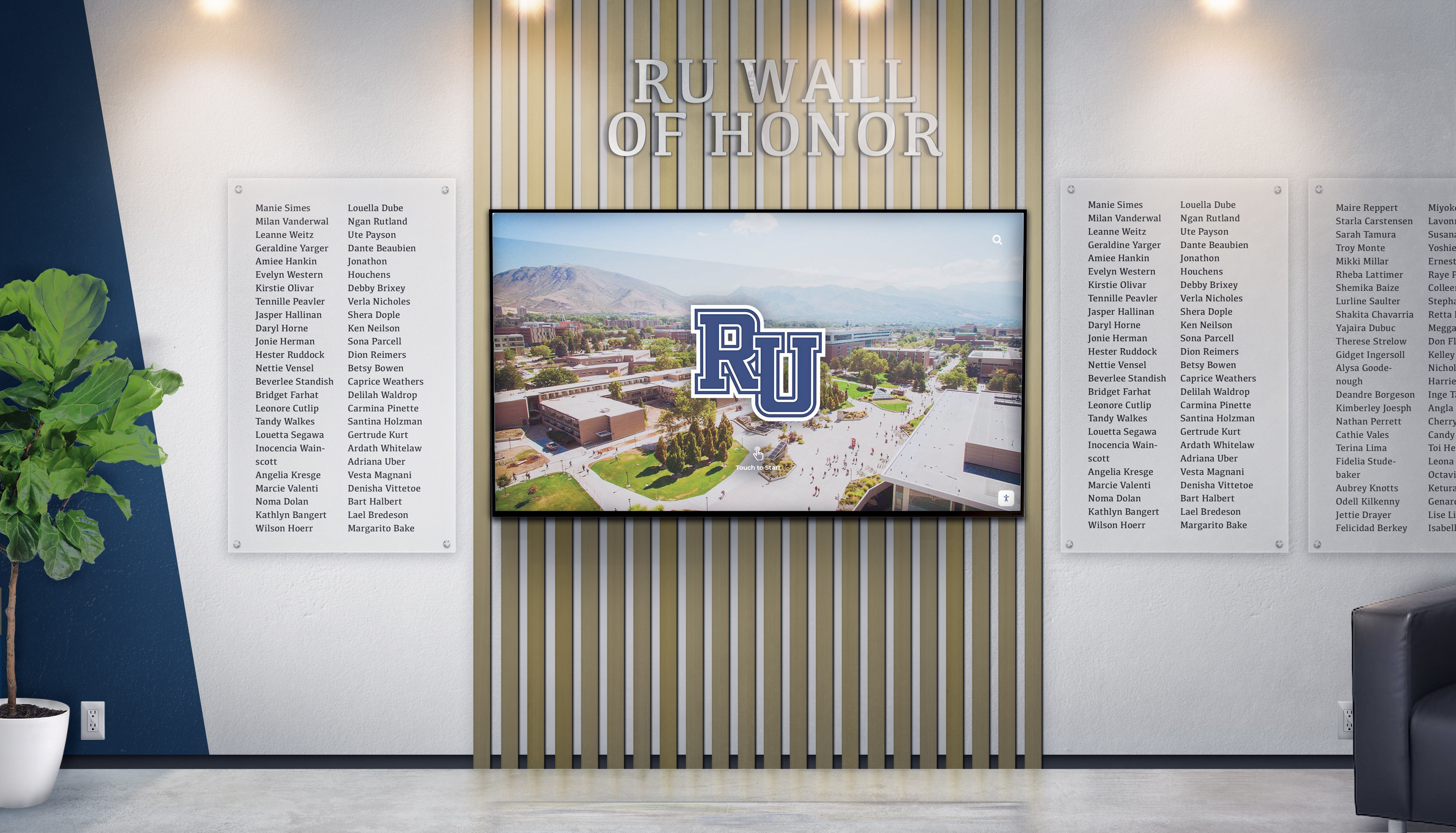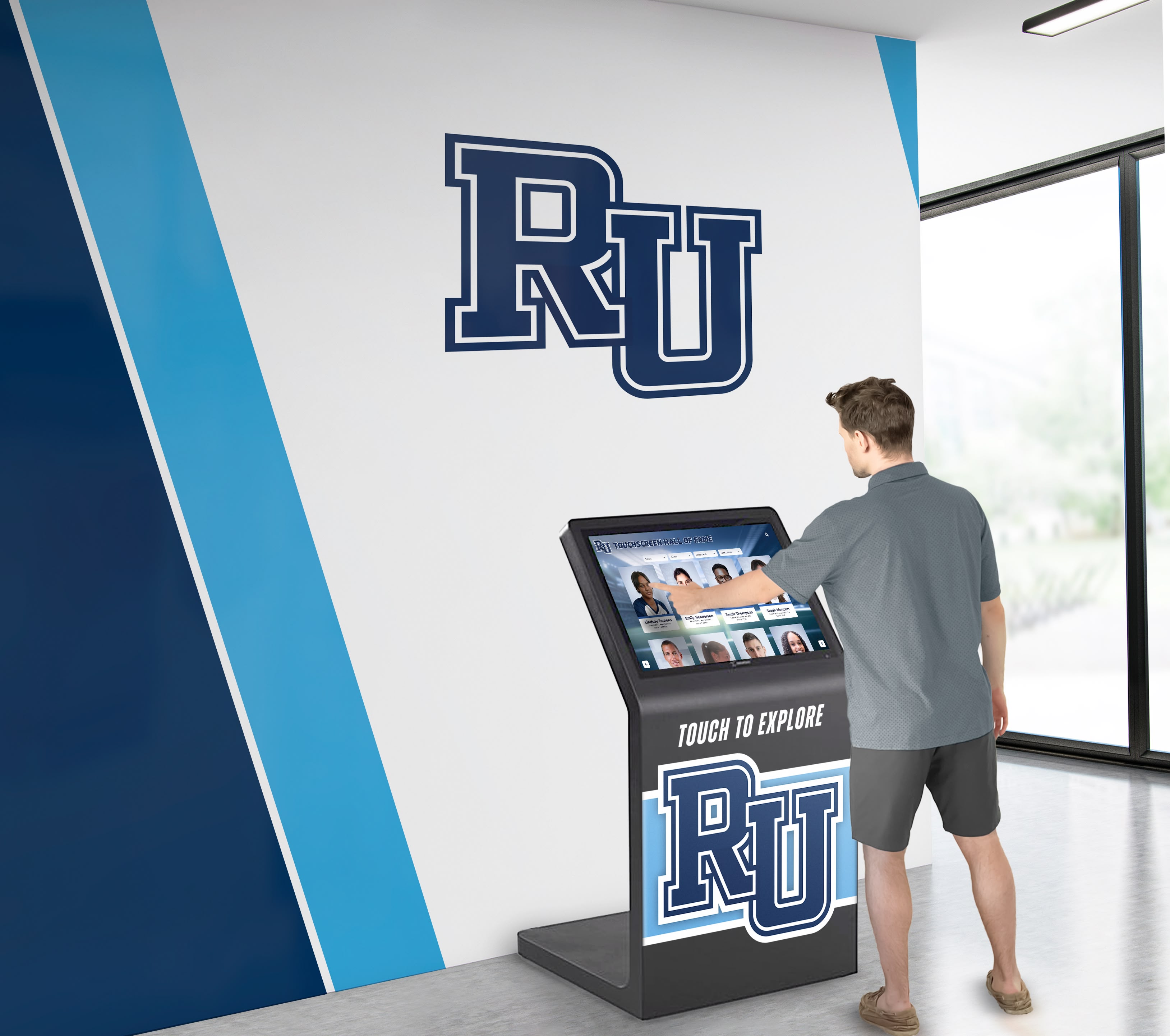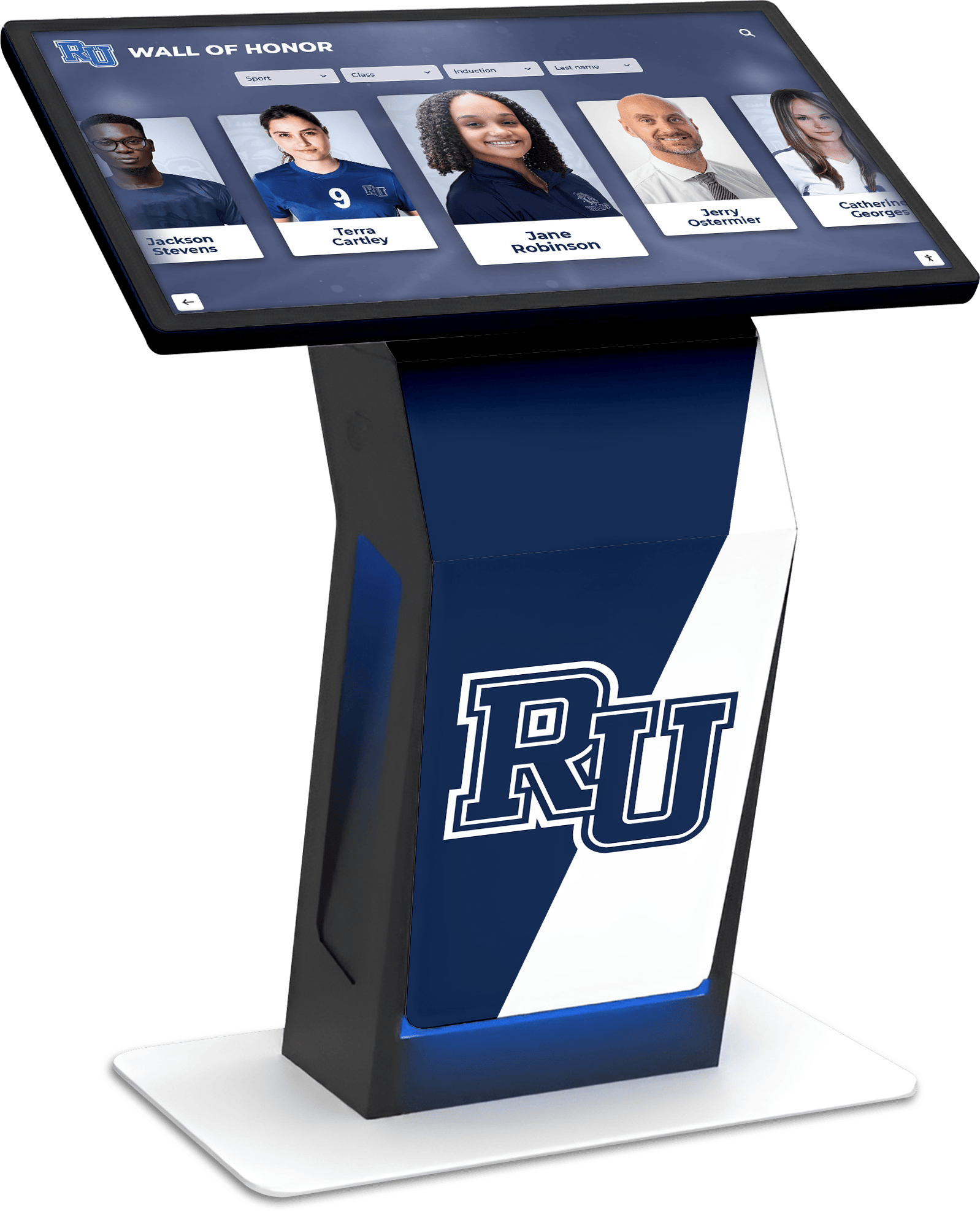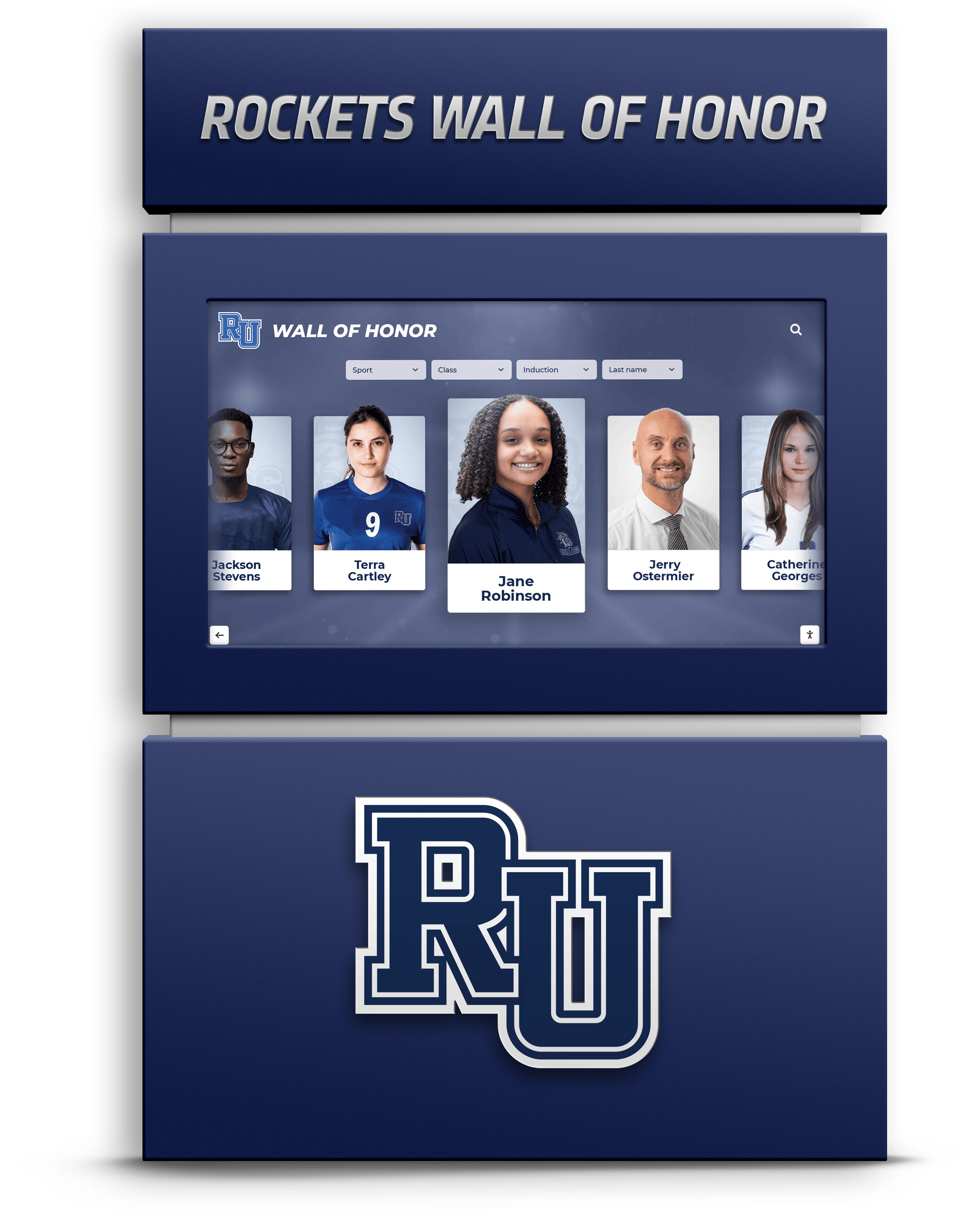Modern offices face a persistent challenge: how do you create genuine community in spaces where people spend most of their waking hours? With remote work, hybrid schedules, and increasingly diverse teams, building meaningful connections at work requires more than occasional pizza parties or annual retreats. Today’s most successful organizations recognize that community engagement in the office directly impacts employee satisfaction, retention, productivity, and overall organizational health.
Community engagement transforms offices from places people merely work into environments where team members feel connected, valued, and invested in collective success. When employees experience genuine community at work, they demonstrate higher engagement, stronger collaboration, increased innovation, and deeper commitment to organizational goals. Yet many organizations struggle to move beyond superficial activities toward meaningful engagement strategies that create lasting impact.
This guide addresses the unique challenges facing today’s offices: distributed teams working different schedules, diverse workforces with varying preferences, limited budgets for engagement initiatives, time constraints preventing elaborate programs, and the need for authentic connection rather than performative team building. The strategies outlined here work for organizations of all sizes, from small startups to large corporations, creating community that feels genuine rather than manufactured.
Understanding Office Community Engagement
Before implementing specific tactics, understanding what makes office community engagement effective ensures efforts create genuine connection rather than going through meaningless motions.
What Makes Office Community Engagement Different
Office community engagement differs significantly from broader community engagement because of unique workplace dynamics, hierarchies, and the intersection of professional and personal relationships.
Workplace-Specific Considerations:
Professional Boundaries: Office engagement must balance authentic connection with appropriate professional boundaries. Activities should build relationships without forcing unwanted personal disclosure or creating uncomfortable situations that cross professional lines. Effective office engagement recognizes that workplace relationships differ from personal friendships while still offering meaningful connection.
Diverse Preferences: Workplace populations span generations, personality types, cultural backgrounds, and personal preferences regarding social interaction. Some team members thrive in group activities while others prefer quieter connection. Successful engagement accommodates diverse preferences rather than forcing everyone into identical participation modes.
Time and Energy Constraints: Employees already manage full workloads, making lengthy or demanding engagement activities impractical. Effective office engagement integrates naturally into work flow rather than adding burdensome obligations that create resentment instead of connection.
Remote and Hybrid Complexity: Modern offices rarely gather everyone in one location simultaneously. Engagement strategies must serve distributed teams, ensuring remote workers experience equal inclusion rather than feeling like second-class community members.

The Benefits of Strong Office Community
Investing in office community engagement creates measurable returns extending far beyond feel-good sentiment.
Organizational Benefits:
Improved Retention: Employees with strong workplace connections demonstrate significantly lower turnover. When people feel genuinely connected to colleagues, they’re less likely to leave organizations even when offered higher compensation elsewhere. Given that replacing an employee costs approximately 6-9 months of their salary, retention improvements from enhanced community quickly justify engagement investments.
Enhanced Collaboration: Strong community breaks down silos and facilitates cross-functional collaboration. When team members know and trust each other beyond formal work interactions, they communicate more effectively, share information freely, and collaborate naturally rather than territorially protecting information or resources.
Increased Innovation: Psychological safety created through genuine community enables the risk-taking and idea sharing essential for innovation. When employees feel connected to and supported by colleagues, they’re more willing to propose unconventional ideas, admit mistakes, and experiment with new approaches.
Higher Productivity: Contrary to concerns that community engagement distracts from work, strong workplace connections actually enhance productivity. Employees who feel connected work more efficiently, help each other problem-solve, and maintain higher motivation during challenging periods.
Stronger Culture: Community engagement reinforces organizational values and culture through daily interactions rather than depending solely on formal communications. Shared experiences create common understanding of “how we do things here,” transmitting culture organically through relationship networks.
Understanding how organizations implement employee recognition displays provides valuable insight into one powerful tool for building office community through visible celebration of team member contributions and achievements.
Recognition-Based Engagement Strategies
Recognition forms a cornerstone of effective community engagement, validating contributions while strengthening bonds among team members who witness acknowledgment of excellence.
Creating Visible Recognition Culture
Recognition becomes most powerful when made visible to entire teams rather than delivered privately, creating shared celebration that builds community.
Public Recognition Approaches:
Team Meeting Acknowledgment: Dedicate time in regular team meetings for structured recognition of specific accomplishments, behaviors, or contributions. Effective recognition shares details about what someone did and why it mattered, creating stories that inspire others while honoring individuals. Unlike perfunctory mentions, meaningful meeting recognition includes context helping colleagues understand significance and impact.
Recognition Boards and Displays: Create physical or digital spaces specifically dedicated to celebrating employee accomplishments, milestones, and contributions. Modern interactive recognition displays transform traditional bulletin boards into engaging platforms featuring photos, videos, peer testimonials, and detailed achievement documentation. These visible tributes create daily reminders that contributions matter while inspiring others through peer examples.
Newsletter and Email Features: Regular recognition features in company newsletters or dedicated email series ensure accomplishments reach entire organizations, particularly valuable for distributed teams who may not attend the same meetings or visit the same offices. Written recognition allows more detailed storytelling than verbal acknowledgment permits while creating permanent records of achievement.
Social Recognition Platforms: Digital platforms enabling peer-to-peer recognition create cultures where acknowledgment flows continuously from multiple directions rather than only from leadership. When team members can recognize each other in real-time through accessible platforms, recognition becomes woven into daily operations rather than reserved for formal occasions.

Milestone Celebration Programs
Celebrating work anniversaries, project completions, and personal milestones creates natural engagement opportunities while demonstrating organizational attention to individual team members.
Milestone Recognition Ideas:
Work Anniversary Celebrations: Honor employment anniversaries with personalized acknowledgment matching tenure significance. First-year celebrations welcome employees into community, five-year recognition acknowledges sustained contribution, and longer tenures deserve special celebration including leadership remarks, gifts, or dedicated recognition events. Anniversary recognition communicates that longevity and loyalty matter to organizational culture.
Project Completion Recognition: Celebrate successful project completions with team-wide acknowledgment of everyone who contributed. Project recognition might include team lunches, recognition displays documenting the project journey, or leadership presentations explaining project significance and team contributions. Visible project celebration validates intense effort while creating shared accomplishment experiences binding teams together.
Personal Milestone Acknowledgment: Appropriate recognition of personal milestones—graduations, certifications, community achievements, or family celebrations—demonstrates organizational care for whole persons rather than viewing employees merely as productive resources. Personal milestone recognition requires sensitivity regarding privacy, seeking permission before public acknowledgment, but appropriate celebration strengthens bonds by honoring the full humanity of team members.
Goal Achievement Recognition: Acknowledge when individuals or teams reach performance goals, sales targets, quality benchmarks, or other objectives. Goal recognition reinforces desired outcomes while creating positive associations with achievement that motivate continued excellence.
Organizations exploring comprehensive recognition approaches often benefit from understanding complete recognition solution options that integrate multiple acknowledgment methods into cohesive programs supporting sustained engagement.
Peer-to-Peer Recognition Systems
Enabling employees to recognize each other creates distributed acknowledgment cultures rather than depending solely on leadership awareness and initiative.
Peer Recognition Approaches:
Recognition Cards or Notes: Provide physical or digital cards allowing team members to write appreciation messages to colleagues. Simple thank-you cards distributed throughout offices or digital versions sent through internal systems create easy acknowledgment opportunities. Collections of received cards become visible representations of appreciation, while writing cards builds habits of noticing and acknowledging others’ contributions.
Kudos Boards: Dedicate physical wall space or digital platforms where anyone can post appreciation messages about colleagues. Public kudos create community celebration of individual contributions while modeling acknowledgment behaviors that strengthen appreciation cultures. Regular leadership engagement with kudos boards—reading posted messages, adding their own, or sharing particularly meaningful recognition—validates these peer systems.
Nomination Programs: Enable employees to nominate colleagues for monthly or quarterly recognition awards. Nomination-based systems leverage organizational knowledge distributed across teams, ensuring accomplishments leaders might miss receive appropriate acknowledgment. Well-designed nomination processes request specific examples rather than generic praise, creating meaningful recognition rooted in concrete contribution rather than popularity.
Recognition Meetings: Dedicate short regular gatherings specifically to team members sharing appreciation for colleagues. Five-minute weekly huddles where several people offer quick recognition create rhythm and expectation around acknowledgment. These brief recognition moments build community through shared celebration without demanding excessive time.
Social Connection Activities
Beyond recognition, intentional social activities create opportunities for relationship building that strengthens office community.
Regular Social Rituals
Consistent, predictable social opportunities allow relationship development over time rather than depending on occasional elaborate events.
Social Ritual Ideas:
Coffee or Lunch Roulette: Randomly pair team members for coffee or lunch conversations, creating connections across departments and levels that might not naturally occur. Automated tools can handle pairing and scheduling, removing organizational burden while ensuring everyone participates regularly. These one-on-one interactions build relationship networks across organizations, breaking down silos while helping individuals feel known beyond their immediate teams.
Weekly Team Lunches: Organize regular team lunches—whether catered in-office meals or coordinated restaurant outings—creating relaxed social time alongside colleagues. Shared meals facilitate conversation in less formal contexts than work meetings, allowing relationship development through casual interaction. Rotating responsibility for selecting venues or meal themes builds team involvement while distributing planning burden.
Coffee Bar or Break Room Gatherings: Create inviting break spaces and establish regular informal gathering times. Simple improvements like quality coffee, comfortable seating, and welcoming atmosphere encourage spontaneous social interaction. Organizations might establish “coffee talk” times when people naturally congregate, creating unstructured social opportunities without requiring formal activities.
Walking Meetings: Replace some traditional seated meetings with walking meetings that combine productivity with physical activity and environment change. Walking meetings work particularly well for one-on-one or small group discussions, creating different interaction dynamics than conference rooms while supporting health and wellness. Regular walking meeting opportunities build community through shared activity while accomplishing necessary work conversations.

Team Building Through Shared Experiences
Coordinated activities creating shared experiences build community through collective participation in memorable events.
Shared Experience Ideas:
Volunteer Days: Organize team volunteer activities supporting local causes aligned with organizational or team values. Volunteer experiences create shared purpose beyond daily work while contributing to broader communities, enhancing organizational reputation and employee pride. Service projects might include food bank volunteering, park cleanup, habitat home building, or pro bono professional service for nonprofits. Shared service builds bonds through collective contribution to meaningful causes.
Team Challenges: Create friendly competitions around wellness goals, learning objectives, or creative projects. Month-long step challenges, reading challenges, or skill-building competitions create ongoing shared experiences and conversation topics. Team challenges work well when designed for inclusive participation rather than only rewarding those with most time or resources to invest.
Cultural Celebrations: Honor diverse cultural backgrounds represented within teams through celebration of various cultural holidays, heritage months, or traditions. Cultural celebrations might include potluck meals featuring traditional foods, educational presentations about cultural significance, or decoration incorporating cultural symbols. Authentic cultural celebration requires engaging team members from represented cultures in planning rather than imposing superficial or stereotypical activities.
Learning Together: Organize group learning experiences like lunch-and-learn sessions, skill workshops, or book clubs that combine professional development with social connection. Shared learning creates common knowledge and experience while building community through collective intellectual engagement. Organizations recognizing achievement across diverse areas benefit from understanding comprehensive recognition program structures that acknowledge various accomplishment types.
Interest-Based Groups
Enabling self-organized groups around shared interests creates organic community building driven by genuine common passion rather than mandated participation.
Interest Group Approaches:
Employee Resource Groups: Support employee-led groups organized around shared characteristics, experiences, or interests—women in leadership, LGBTQ+ employees, parents, veterans, or specific cultural backgrounds. Resource groups provide community for members while educating broader organizations about diverse perspectives and needs. Effective resource group support includes budget allocation, executive sponsorship, and integration with organizational decision-making rather than treating groups as purely social.
Hobby Clubs: Enable formation of clubs around shared interests like photography, running, cooking, gaming, book reading, or any activities team members enjoy. Hobby clubs create connection points beyond work tasks while allowing relationship development through shared passion. Organizations might provide modest budgets, meeting space, or time allowances supporting club activities while leaving organization to interested employees.
Professional Development Circles: Facilitate groups focused on shared professional growth interests like public speaking, specific technologies, industry certifications, or leadership development. Professional development circles combine career advancement with community building, creating networks that support both skill development and workplace connection.
Wellness Groups: Support groups organized around wellness goals like walking groups, meditation circles, healthy cooking, or stress management. Wellness-focused community addresses whole-person needs while building relationships through shared commitment to health and wellbeing.
Physical Space Design for Community
Office design significantly influences community building by either facilitating or hindering natural interaction and connection.
Creating Community-Friendly Spaces
Thoughtful space design encourages spontaneous interaction while providing comfortable environments for both focused work and social connection.
Space Design Principles:
Collision Zones: Design spaces where people naturally encounter each other during daily movements—near elevators, coffee stations, frequently-used printers, or main corridors. Strategic placement of amenities creates natural gathering points without forcing interaction, allowing organic conversation opportunities. Comfortable seating in collision zones encourages brief conversations to extend beyond passing greetings.
Varied Work Settings: Provide diverse space types serving different work modes and social preferences—quiet focus areas, collaborative zones, phone booths, casual seating areas, and formal meeting rooms. Variety allows individuals to select environments matching their task and interaction needs rather than forcing everyone into identical settings. Community spaces should feel genuinely welcoming rather than appearing as nice-but-unused showpieces.
Welcoming Break Areas: Invest in quality break rooms and casual gathering spaces with comfortable furniture, good lighting, and amenities encouraging use. Depressing break rooms with harsh fluorescent lights and uncomfortable plastic chairs discourage social time, while inviting spaces with natural light, comfortable seating, and appealing aesthetics encourage team members to linger and interact.
Recognition Display Integration: Incorporate recognition displays into community spaces where people naturally gather. Prominent placement of interactive recognition kiosks in main lobbies, cafeterias, or common areas ensures daily visibility while creating conversation starters as team members explore colleague achievements and milestones.

Supporting Remote and Hybrid Connection
Physical office design must extend to digital environments serving remote and hybrid team members experiencing equal community access.
Virtual Community Approaches:
Virtual Water Cooler Spaces: Create digital channels dedicated to non-work conversation and social connection. Channels might focus on hobbies, current events, pet photos, food recommendations, or any topics facilitating casual conversation. Virtual social spaces allow remote workers to experience the spontaneous interactions office workers have naturally while providing outlets for personality and personal interests beyond work tasks.
Video-On Culture: Encourage video-enabled meetings when possible, allowing team members to see each other and experience visual connection. While respecting that constant video causes fatigue, strategic video use for relationship-building conversations helps remote workers feel more connected than audio-only interaction permits. Organizations might establish norms like “video-on for check-ins, video-optional for working meetings” balancing connection with comfort.
Digital Recognition Displays: Ensure recognition systems remain equally accessible to remote workers through online platforms. Cloud-based recognition displays allow anyone to explore colleague achievements regardless of office location, while submission processes enable remote workers to contribute testimonials and recognition nominations. Equal access to recognition visibility and participation creates inclusion rather than maintaining two-tiered systems favoring office workers.
Hybrid Meeting Equity: Design hybrid meetings ensuring remote participants experience equal engagement rather than feeling like second-class attendees watching room-based conversations. Equity practices include explicitly inviting remote input, displaying remote participants prominently on screens, using chat for all questions rather than only verbal input, and rotating facilitation responsibilities to include remote team members.
Communication and Storytelling
How organizations communicate shapes community by either highlighting connections and shared purpose or maintaining isolated information silos.
Storytelling That Builds Community
Strategic storytelling creates shared narratives that bind team members together through common understanding of organizational purpose, values, and history.
Storytelling Approaches:
Origin Stories: Share stories about organizational founding, significant historical moments, or pivotal decisions shaping current identity. Origin stories help newer team members understand organizational evolution while creating common knowledge that binds people across tenure. Regular sharing of history ensures organizational memory persists beyond founding team retention.
Customer Impact Stories: Communicate specific examples of how organizational work positively impacted customers or communities. Impact stories connect daily tasks to meaningful outcomes, creating shared purpose that transcends individual role descriptions. Team members experience greater engagement when understanding how their contributions matter to actual people benefiting from organizational work.
Employee Journey Stories: Feature profiles of team members sharing their paths to current roles, memorable projects, career growth within organizations, or what they value about workplace culture. Employee stories humanize colleagues beyond job titles while showcasing organizational commitment to career development. Regular employee features demonstrate that everyone’s journey matters regardless of seniority or role prominence.
Behind-the-Scenes Content: Share content revealing how products get made, services get delivered, or organizational operations function across departments. Behind-the-scenes glimpses help team members understand colleague work and appreciate cross-functional contributions, building respect and connection across organizational silos.
Organizations seeking to enhance storytelling through digital recognition find that effective storytelling techniques transform simple acknowledgment into compelling narratives that build authentic community and organizational pride.
Transparent Communication Practices
Openness in organizational communication builds trust and community by demonstrating respect for employee intelligence and right to understand organizational direction.
Transparency Practices:
Regular All-Hands Meetings: Hold frequent organization-wide meetings where leadership shares updates, answers questions, and creates visibility into strategic decisions and organizational performance. All-hands meetings work best when including genuine question opportunities rather than purely top-down presentations, demonstrating willingness to engage transparently with team concerns and curiosity.
Open Book Management: Share financial information, performance metrics, and strategic plans broadly rather than limiting knowledge to senior leadership. Informed employees make better decisions, understand organizational constraints, and feel trusted as genuine organizational partners rather than kept in the dark about important information affecting their work.
Decision-Making Visibility: Explain reasoning behind significant decisions rather than simply announcing conclusions. Understanding decision rationale helps team members accept outcomes even when disagreeing with conclusions, while mysterious unexplained decisions breed cynicism and disconnection. Transparency about decision-making builds trust that leadership considers employee perspectives and acts with good intentions.
Challenge Acknowledgment: Openly discuss organizational challenges rather than maintaining artificial positivity ignoring obvious difficulties. Authentic acknowledgment of problems demonstrates respect for employee intelligence while creating opportunities for collective problem-solving. Community strengthens when facing challenges together rather than pretending difficulties don’t exist.
Measuring and Sustaining Engagement
Effective community engagement requires assessment mechanisms ensuring continuous improvement based on evidence rather than assumptions about what works.
Engagement Metrics
Quantifiable metrics help organizations track community building effectiveness and identify areas needing attention.
Measurement Indicators:
Participation Rates: Track participation in community activities, recognition programs, social events, and interest groups. Consistently low participation signals activities missing the mark or communication gaps preventing awareness. Participation metrics should examine demographic patterns ensuring community engagement reaches all employee segments rather than only certain groups.
Retention and Turnover: Monitor whether enhanced community engagement correlates with improved retention rates, particularly examining voluntary turnover among high performers organizations most want to retain. Exit interviews with departing employees should specifically explore whether workplace community influenced retention decisions.
Employee Engagement Scores: Regular engagement surveys measuring factors like workplace relationships, sense of belonging, value alignment, and organizational pride provide quantitative data about community health. Trend analysis over time reveals whether community initiatives successfully strengthen engagement or need adjustment.
Internal Communication Metrics: Examine engagement with internal communications, newsletter open rates, intranet page views, or digital recognition platform usage. Strong community correlates with higher internal communication engagement as employees actively seek connection with organizational information and colleague updates.
Network Analysis: For organizations using digital collaboration tools, analyze communication and connection patterns revealing relationship networks. Network analysis identifies highly connected employees, isolated individuals needing community support, and departmental silos requiring bridge-building efforts.

Continuous Improvement
Community engagement requires ongoing evolution based on feedback and changing organizational needs rather than implementing programs once and assuming they’ll remain effective indefinitely.
Improvement Processes:
Regular Feedback Collection: Systematically gather employee feedback about community engagement through surveys, focus groups, suggestion systems, or informal conversations. Feedback should explore both what works well worth expanding and what feels ineffective or burdensome worth reconsidering. Most importantly, organizations must visibly act on feedback received, demonstrating that employee input genuinely influences decisions rather than disappearing into black holes.
Pilot and Iterate: Test new engagement initiatives as pilots before full implementation, gathering feedback from participants and observers before committing resources to broad rollout. Pilot approaches allow learning and adjustment based on actual experience rather than theoretical planning, improving ultimate program effectiveness while managing risk of poorly-received initiatives.
Trend Monitoring: Stay informed about workplace community trends, generational preferences, and innovative engagement approaches emerging across industries. While not every trend suits every organization, awareness of options enables thoughtful consideration of new approaches that might strengthen community in changing contexts.
Leadership Development: Train managers and leaders in community building skills, recognition practices, and engagement techniques. Since immediate managers exert tremendous influence on employee experience, manager capability in fostering team community significantly impacts overall organizational community health. Investing in manager development multiplies engagement impact across entire organization.
Modern office community engagement often integrates technology solutions providing infrastructure supporting sustained acknowledgment and connection. Platforms like Rocket Alumni Solutions offer comprehensive tools originally designed for educational recognition but increasingly adopted by businesses seeking to celebrate team member accomplishments through professional, engaging displays that build workplace community.
Special Considerations for Diverse Workplaces
Effective community engagement must address the reality of increasingly diverse workforces spanning generations, cultures, abilities, and personal preferences.
Inclusive Engagement Approaches
Genuine inclusion requires intentional design ensuring community building serves all team members rather than only those fitting dominant cultural norms.
Inclusion Strategies:
Multiple Engagement Formats: Provide varied engagement opportunities rather than assuming single formats work for everyone. Include both social gatherings and individual recognition, public celebration and private acknowledgment, active participation and passive observation. Variety ensures different personality types, cultural preferences, and personal circumstances can all find comfortable engagement modes.
Accessibility Considerations: Design community spaces and activities considering physical accessibility for team members with mobility limitations, sensory sensitivities, or other disabilities. Digital community platforms should follow accessibility guidelines ensuring screen reader compatibility, keyboard navigation, and other accommodations. Accessible design benefits everyone while ensuring excluded individuals don’t experience isolation due to preventable barriers.
Cultural Sensitivity: Recognize that cultural backgrounds influence social preferences, recognition comfort, and appropriate interaction styles. What feels like friendly engagement in one culture may seem inappropriately informal or invasive in another. Building authentic community requires learning about represented cultures rather than assuming dominant culture norms apply universally.
Flexibility for Personal Circumstances: Respect that employees manage diverse personal circumstances—caregiving responsibilities, health conditions, financial constraints, or personal preferences—affecting engagement participation ability. Authentic community building doesn’t penalize those who can’t attend after-work social events or participate in activities requiring financial contribution, instead providing multiple engagement pathways accessible regardless of individual circumstances.
Generational Considerations
Modern workplaces increasingly span four generations simultaneously, each bringing different expectations and preferences regarding workplace community.
Multi-Generational Approaches:
Varied Technology Comfort: Recognize varying technology comfort and preferences across generations. While digital-native younger employees may prefer app-based recognition and virtual community spaces, others may value face-to-face interaction and traditional acknowledgment methods. Hybrid approaches incorporating both high-tech and high-touch elements serve generational diversity.
Different Career Stage Needs: Community needs differ based on career stage. Early-career employees often seek mentorship and skill development while mid-career professionals value work-life balance and late-career team members may prioritize legacy and knowledge transfer. Effective community engagement provides value across career stages rather than only serving one demographic.
Respect for Experience: Ensure community building honors the wisdom and institutional knowledge of longer-tenured employees while welcoming fresh perspectives from newer team members. Generational tensions emerge when either experience is dismissed as outdated or new ideas are rejected as lacking context. Healthy community bridges generational differences through mutual respect.
Conclusion: Building Lasting Office Community
Office community engagement represents far more than superficial team building or mandated fun—it creates the social infrastructure enabling human flourishing in professional contexts where adults spend the majority of their waking hours. When thoughtfully implemented with genuine respect for employee dignity, diversity, and autonomy, community engagement transforms workplaces from simply locations where people accomplish tasks into environments where individuals feel valued, connected, and invested in collective success.
The most successful office community engagement strategies share common characteristics: they respect employee time and personal boundaries, they accommodate diverse preferences rather than forcing uniform participation, they feel authentic rather than performative, they receive consistent organizational support rather than fluctuating based on leadership whims, they integrate naturally into work rhythm rather than adding burdensome obligations, and they evolve based on employee feedback rather than imposing unchanging programs regardless of effectiveness.
Key Principles for Office Community Engagement:
- Make recognition visible and specific, celebrating concrete contributions
- Provide varied engagement options serving different preferences and styles
- Design inclusive activities accessible regardless of personal circumstances
- Integrate community building into daily operations rather than treating it as separate
- Enable peer-to-peer connection rather than only top-down initiatives
- Respect that authentic community develops over time through consistent effort
- Measure engagement effectiveness and adjust based on evidence
- Ensure remote and hybrid workers experience equal community access
- Build community through both physical spaces and digital platforms
- Sustain engagement through assigned coordination and adequate resources
Organizations investing strategically in office community engagement reap substantial benefits: improved employee retention reducing costly turnover, enhanced collaboration strengthening cross-functional work, increased innovation emerging from psychological safety, higher productivity from engaged committed teams, and ultimately, stronger organizational cultures where people choose to invest their talent, creativity, and dedication because they feel genuinely connected to colleagues and purpose.
Ready to enhance your office community through meaningful recognition? Modern solutions like Rocket Alumni Solutions provide platforms specifically designed for workplace acknowledgment, offering professional recognition displays, intuitive content management, and engaging features that help organizations celebrate team member contributions while building the strong workplace community everyone deserves.




































